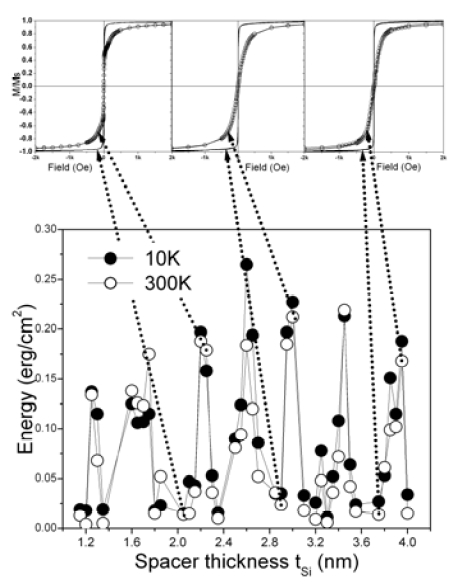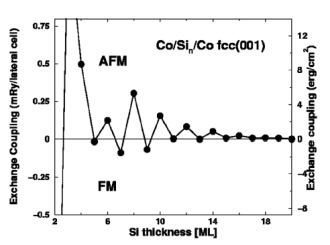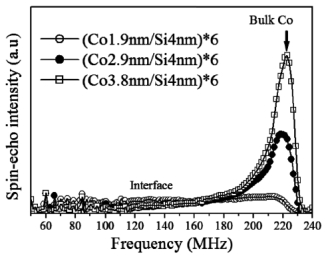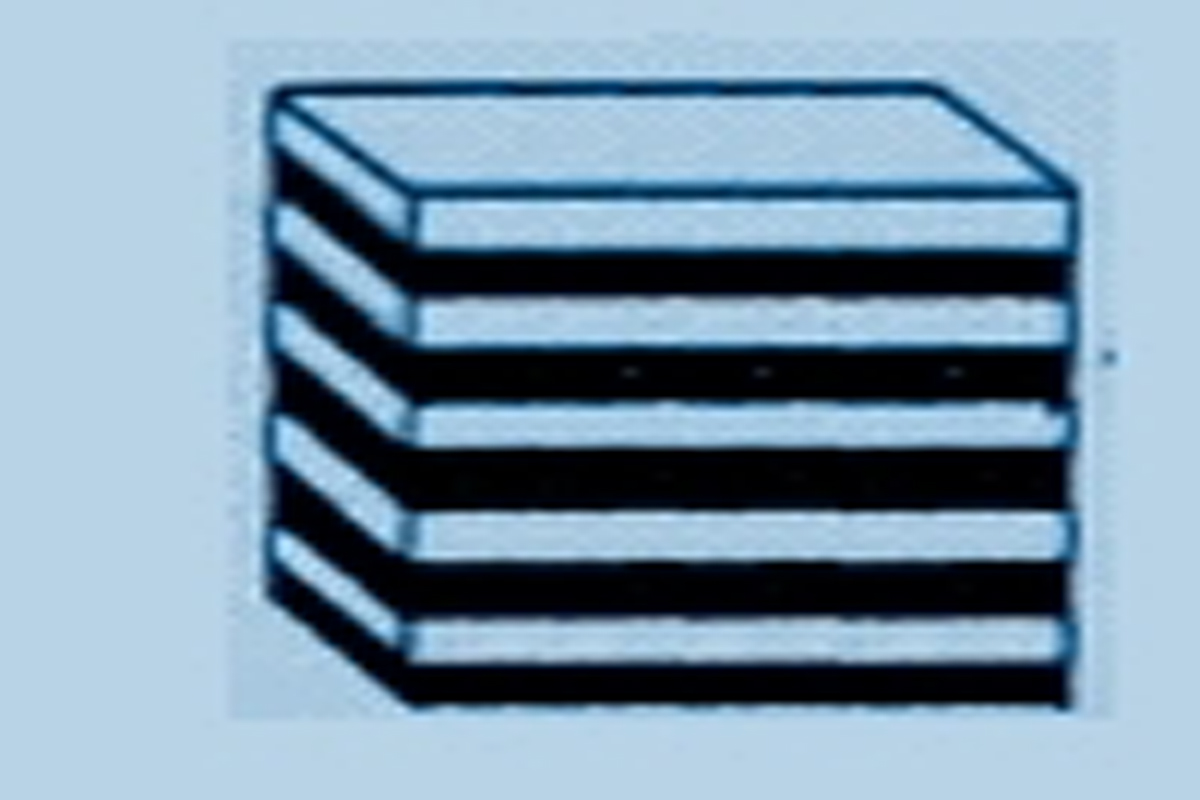Short Period Magnetic Coupling Oscillations in Co/Si Multilayers : Theory versus Experiment N. Yaacoub, C. Meny, O. Bengone, P. Panissod, Phys. Rev. Lett. 97, 257206 (2006)
Today the magnetic properties of multilayers and nanostructures including a metal or an insulator as a nonmagnetic spacer layer are rather well understood. But they are much more controversial for semiconductor spacers. For instance, for Co/Si multilayers short period coupling oscillations are predicted by ab initio computations but have yet to be observed. Here we show in Co/Si multilayers prepared at low temperature (90 K) strong saturation field oscillations that are consistent with the predicted coupling oscillations. However, the decay length of the oscillations is much longer than the expected one and cannot be explained within the framework of available theories.

Magnetic properties of the Co=Si multilayers versus the Si spacer thickness. Top panel: examples of magnetization curves. Bottom panel: magnetic energy needed to saturate the samples.

NMR spectra of Co=Si multilayers. Increasing the Co thickness does increase the bulk contribution only. The interface width is limited by low temperature elaboration.(positives) négatives correspondent à un couplage (anti) ferrromagnétique des couches de cobalt magnétiques.

Calculated exchange coupling of Co=Si-n-=Co multilayers as a function of silicon thickness. The coupling strength is given in mRy per computation shell (left scale) and in erg=cm2 (right scale) for comparison with experimental values. Positive and negative values stand for antiferromagnetic (AFM) and ferromagnetic (FM) coupling, respectively, of the cobalt magnetic layers.

